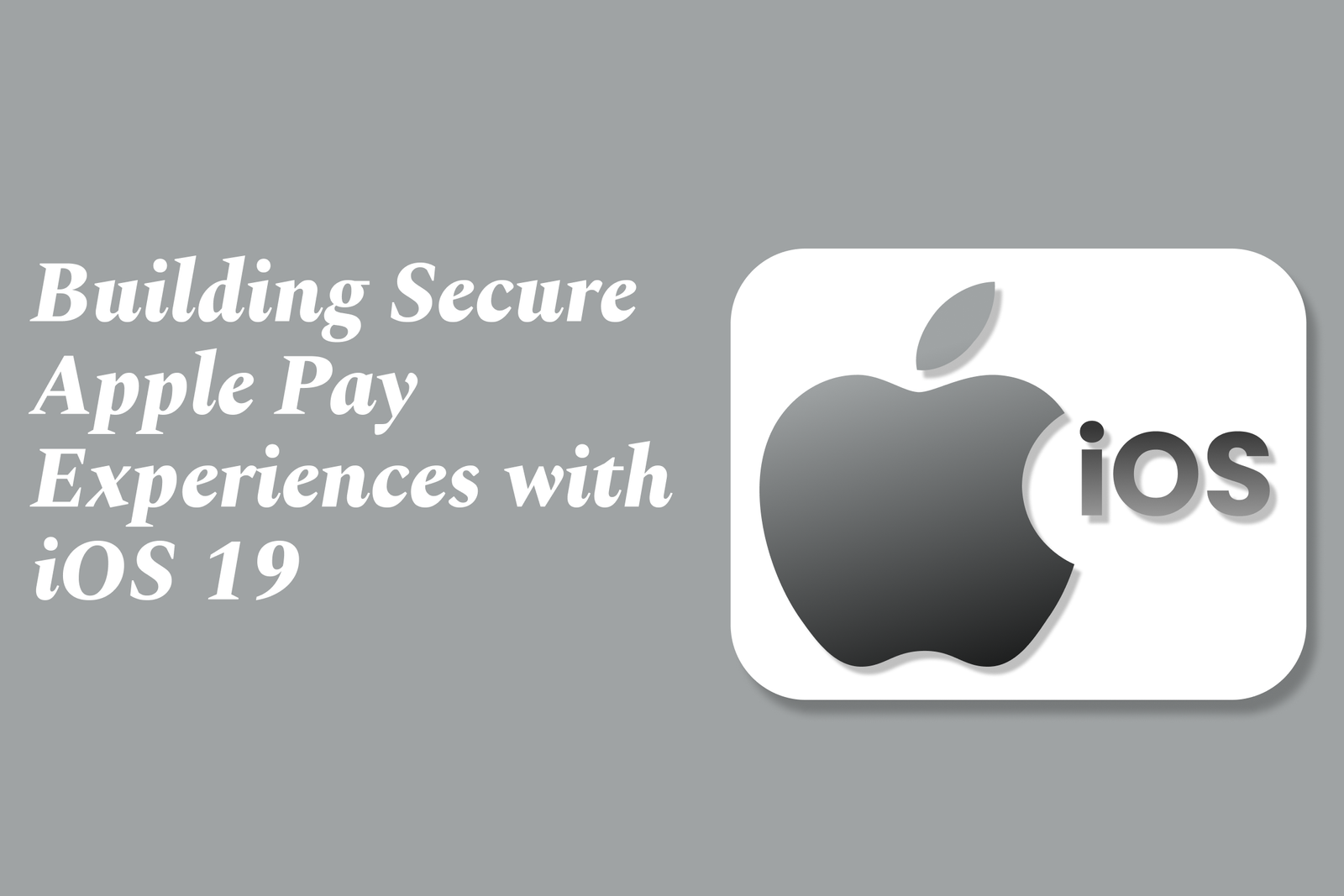Building Secure Apple Pay Experiences with iOS 19
Building secure Apple Pay experiences with iOS 19 leverages Apple's enhanced NFC & Secure Element platform, enabling developers to create safe, contactless payment and access solutions while ensuring user privacy and compliance through strict security protocols and authorized app access.
Building Secure Apple Pay Experiences with iOS 19
1 ) Introduction to NFC & SE Platform for Secure Transactions
iOS 18.1 introduced the NFC & SE (Secure Element) Platform, enabling secure contactless transactions within compatible iOS apps. This platform supports various use cases such as in store payments, car keys, transit passes, corporate and student IDs, home and hotel keys, loyalty and rewards, and event tickets. Future updates plan to include government IDs. The platform integrates multiple hardware and software features, including the Secure Element, Secure Enclave, and Apple Servers, to ensure security and reliability on iPhone devices.
2 ) Developer Access and Security Compliance
To protect user privacy and maintain high security standards, only authorized developers who enter into an agreement with Apple and obtain the NFC & SE Platform Entitlement can access related APIs. These developers must adhere to regulatory requirements and commit to ongoing security and privacy standards, ensuring that apps using this technology provide a secure user experience.
3 ) How NFC Transactions Work in iOS Apps
Users can initiate NFC transactions directly within eligible iOS apps by interacting with compatible NFC terminals. This seamless integration allows developers to build secure, contactless features into their apps, leveraging the iPhone’s advanced hardware capabilities and Apple's secure infrastructure.
4 ) Anticipated Future Developments
Apple continues to evolve the platform, aiming to expand the range of secure contactless use cases accessible to developers and users. This reflects Apple's commitment to enhancing mobile payment security and convenience on iOS devices.
Note: The article primarily focuses on the security infrastructure and developer guidelines related to Apple Pay and NFC transactions in iOS 19, highlighting Apple’s efforts to provide a secure, authorized environment for contactless payments and related features.
https://justacademy.in/news-detail/android-app-monetization-strategies-2025
https://justacademy.in/news-detail/android-voice-typing-enhancements
https://justacademy.in/news-detail/how-react-native-handles-multitasking-on-modern-devices
https://justacademy.in/news-detail/flutter-salary-trends-in-2025
https://justacademy.in/news-detail/swiftui-and-accessibility:-best-practices-in-2025
Related Posts
In 2025, top Angular libraries offer modern, feature-rich components and tools for building dynamic web apps. From powerful data grids to low-code platforms like UI Bakery, these libraries enhance development speed, UI design, and scalability, making them essential for Angular developers.
Migrating from AngularJS to Angular 17 involves gradually upgrading your app by running both frameworks together using tools like ngUpgrade, rewriting components in TypeScript, and adopting Angular’s modern architecture to enhance performance, maintainability, and long-term support.
Angular state management tools help organize and handle app data efficiently, improving scalability and maintainability. Popular options include NgRx for robust, RxJS-based patterns, and newer Signal Store solutions that offer simpler, reactive approaches integrated tightly with Angular’s latest features.
RxJS in Angular empowers developers to manage asynchronous data streams with powerful operators like `forkJoin`, `combineLatest`, and `zip`. Mastering these key operators in 2025 is essential for building efficient, reactive applications that handle complex event sequences seamlessly.
Angular performance optimization in 2025 focuses on improving app speed and responsiveness by using techniques like OnPush change detection, lazy loading, efficient data caching, and AOT compilation. These practices reduce load times, enhance user experience, and ensure scalable, fast Angular applications.
In 2025, Angular remains preferred for large-scale, enterprise apps with its robust, all-in-one framework, while Vue attracts developers seeking simplicity and fast development for smaller projects. Both frameworks excel, with choice driven by project needs and team expertise.
Angular Signals are a new reactive primitive in Angular 16 that enable fine-grained, efficient change detection by automatically tracking dependencies and updating only affected parts of the UI. They simplify state management and boost app performance, revolutionizing Angular's reactivity model.
Angular interview questions to prepare in 2025 focus on core concepts like components, directives, data binding, routing, and dependency injection, along with TypeScript mastery and latest Angular features to ensure strong practical knowledge for building scalable, efficient web applications.
AngularJS reached its official end of support in January 2022, meaning no further updates or security patches. To ensure app security and performance, developers should consider migrating to modern Angular versions or seek third-party long-term support options if immediate migration isn’t possible.
The Angular Roadmap 2025 highlights upcoming features focused on improving developer experience and performance, including zoneless Angular, Signals integration, enhanced Forms, async data handling, improved HMR, and expanded Angular Material/CDK enhancements, driving modern, efficient web app development.










